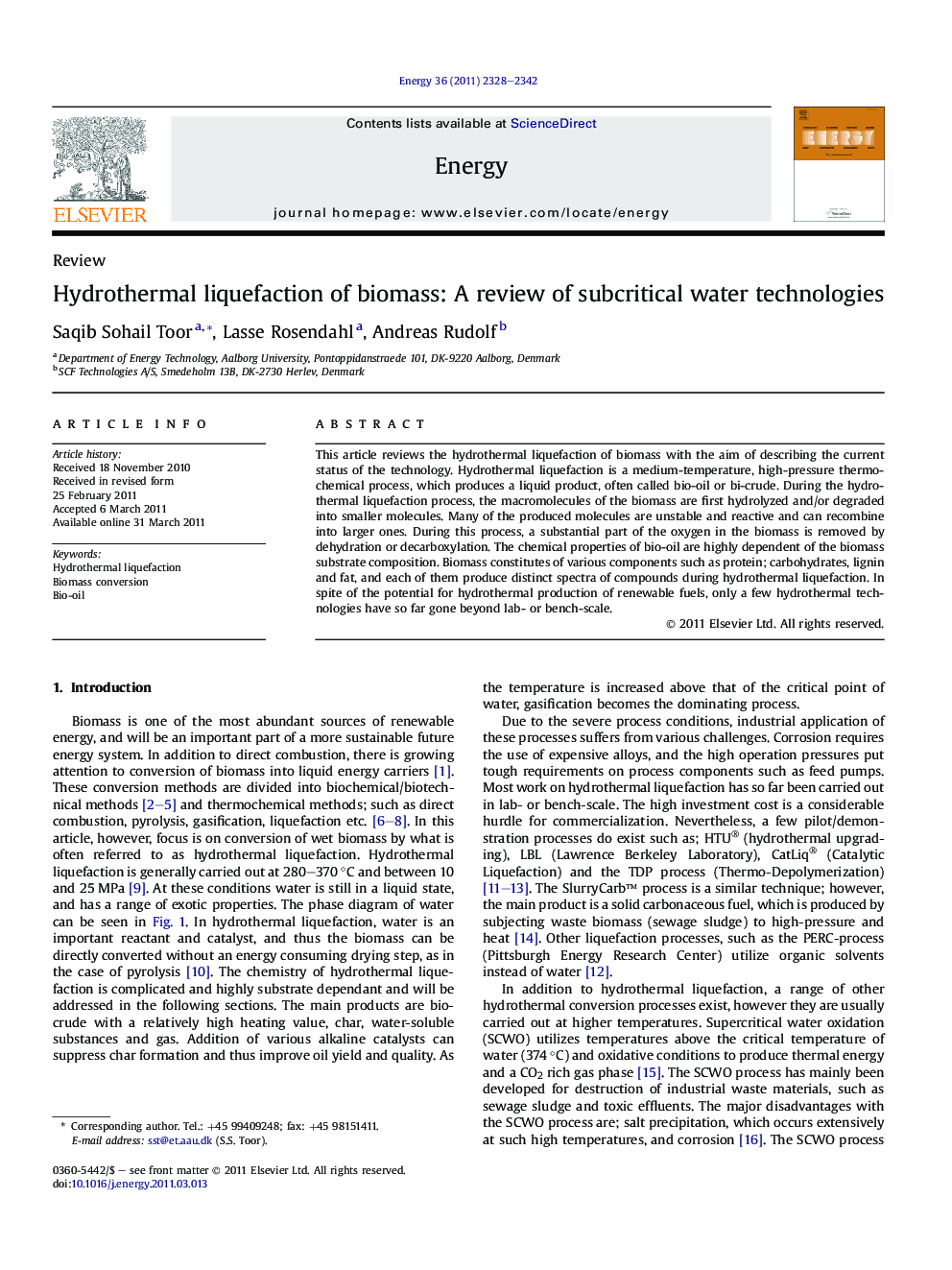| Article ID | Journal | Published Year | Pages | File Type |
|---|---|---|---|---|
| 1734461 | Energy | 2011 | 15 Pages |
This article reviews the hydrothermal liquefaction of biomass with the aim of describing the current status of the technology. Hydrothermal liquefaction is a medium-temperature, high-pressure thermochemical process, which produces a liquid product, often called bio-oil or bi-crude. During the hydrothermal liquefaction process, the macromolecules of the biomass are first hydrolyzed and/or degraded into smaller molecules. Many of the produced molecules are unstable and reactive and can recombine into larger ones. During this process, a substantial part of the oxygen in the biomass is removed by dehydration or decarboxylation. The chemical properties of bio-oil are highly dependent of the biomass substrate composition. Biomass constitutes of various components such as protein; carbohydrates, lignin and fat, and each of them produce distinct spectra of compounds during hydrothermal liquefaction. In spite of the potential for hydrothermal production of renewable fuels, only a few hydrothermal technologies have so far gone beyond lab- or bench-scale.
► In this article we review the hydrothermal liquefaction of different biomasses. ► We explain the properties of water and reaction pathways at liquefaction conditions. ► We also describe the hydrolysis and conversion of carbohydrates, lignin, lipids, protein and various biomasses. ► Effect of both homogeneous and heterogeneous catalysts is studied. ► Current status of the hydrothermal liquefaction technology and comparison also describes.
